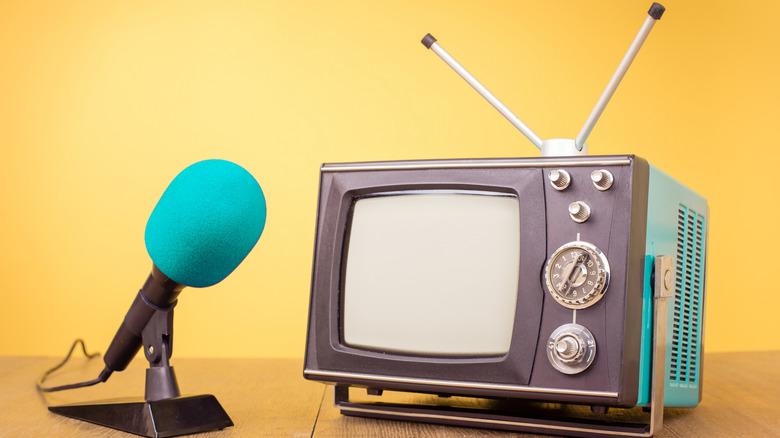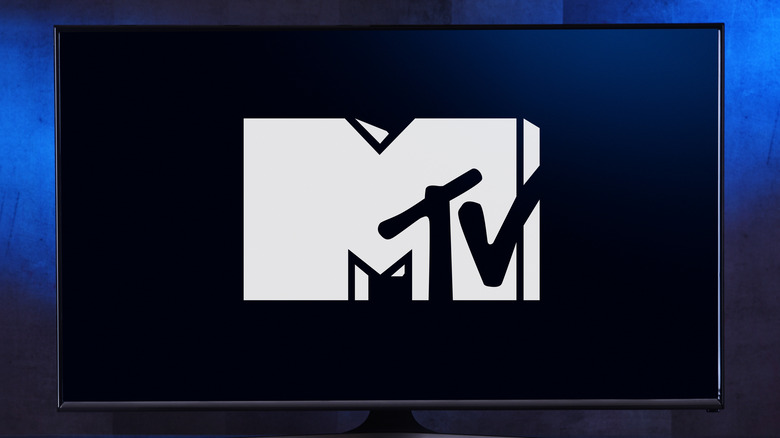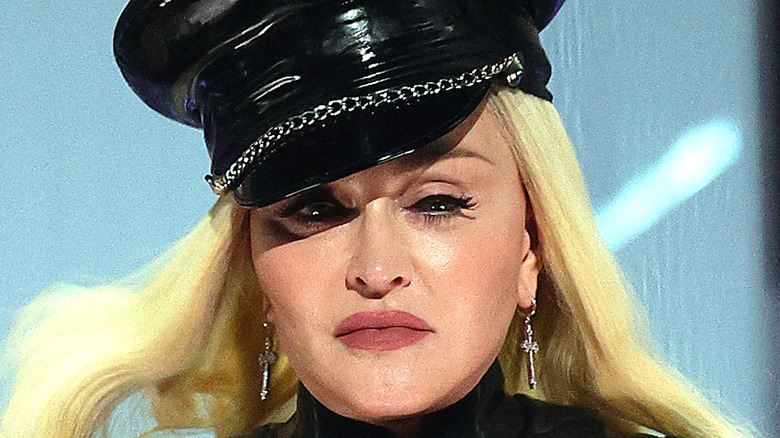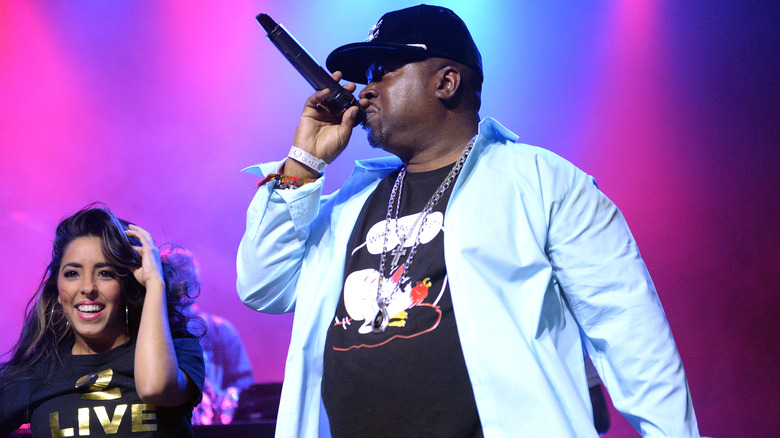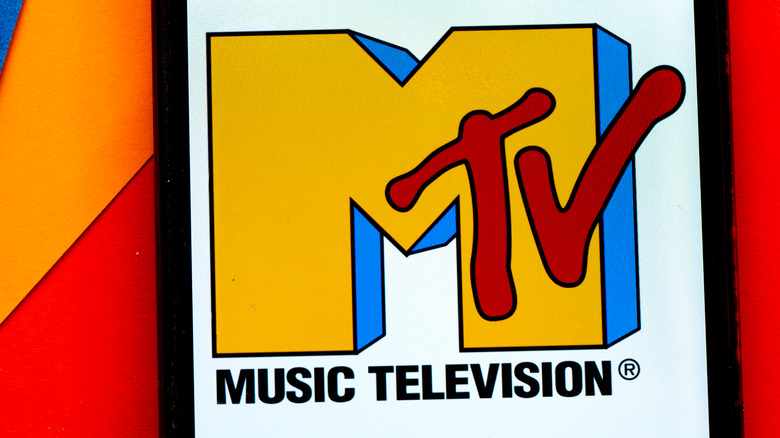What Happened To The Box TV Channel?
Before the internet, watching music videos looked a lot different. If you wanted to hear a song, you could call the radio, but if they wouldn't play it, where could you turn to? Well, one option was The Box TV channel. How did The Box work — and can you still tune into the channel today?
The Box was advertised in 1997 as "the planet's only interactive all music video channel" (via YouTube). They played all genres of music, from rock to Latin to hip-hop. In order to use the service, viewers would watch a scrolling menu of three-digit codes. Then, they would call a 1-900 number and punch in the code for the song they wanted. "If you call, it will play" was The Box's motto, according to TV advertisements.
The best part about The Box was that listeners could hear music that radio stations and MTV refused to play (per Thrillist). They would play songs that verged on pornographic, were lewd, used curse words or strong language, or were rejected by mainstream channels.
More popular than MTV
Another way The Box differed from the radio is that it also would play songs on repeat — if five people all requested the same song, that song would be played five times. As Thrillist reports, when a song became popular, it got a lot of airplay, sometimes as much as ten times an hour, depending on how many callers paid for a request.
Songs like "Pop That P****" by 2 Live Crew, "Baby Got Back" by Sir Mix-a-Lot, "Ice, Ice Baby" by Vanilla Ice, and "Mr. Big Stuff" by Heavy D & the Boyz all got attention on The Box despite their strong content (via Thrillist). In 1996, groups like 2 Live Crew were the most requested artists on the channel. The station was also known as an underground resource to listen to rap music at a time when the genre could hardly be heard anywhere mainstream.
Naughty by Nature's song "O.P.P." was one of these tunes played back-to-back (via Thrillist). The "second-in-command" at the Tommy Boy label, Monica Lynch, said,"[The Box] played a huge factor in the song's success. For us, The Box was more popular and influential than MTV. It was on all the time, and it was in a lot of cities that MTV didn't cover. Places in the South, cities like Detroit. Keep in mind that not everyone had cable in 1991."
Start of the network
Les Garland, a radio and TV personality turned radio programmer, truly boosted the momentum of The Box from 1990 to 1997 (via Missouri State University). An experienced executive, he was the founder of "MTV Spring Break," the MTV Video Music Awards, and the 1985 Live Aid concert. The Box reached about 200,000 people when Garland took over, and by its peak, 30 million people had their eyes on The Box's music videos.
Thrillist reports that The Box was responsible for helping to launch musical acts into stardom when they couldn't get played on the radio. Notably, Green Day and Madonna got their music boosted on the underground channel. Garland recalled that Madonna's song "Justify My Love" was rejected by MTV censors in 1990, so The Box added it to their lineup. The song did well, with viewers requesting it five or more times per hour.
Describing Madonna's "Justify My Love," Les Garland said (via Thrillist), "When we added it, we didn't say a word. We didn't make any promos going 'MTV banned it!' We notified every one of our cable partners that we were going to put this on, and if we got in trouble with the FCC, which we might have, or in trouble with who-knows-who, our position was going to be that we don't play the videos, we merely make them available. If you've got a complaint, take it to the people making the requests. We're just the curators of the art museum."
Banned by MTV — but not The Box
Thrillist reports that in the 1990s, lots of people were watching The Box, but the brand's stock prices began to drop significantly. In 1989, the stock was at $10 a share, but it dropped to $0.50 per share just three years later, in 1992.
By 1995, listeners were dialing about 6 million annual song requests to The Box's 1-900 number. But at a dollar or two per song, the company's then-CEO, Alan McGlade, decided that they simply weren't profiting enough and needed to pursue a more mainstream image. A shift in programming occurred around 1995, with the appointment of a new program director named Frankie Blue. He told Billboard at the time, "We no longer show the 'booty' videos. We had that reputation before, and when we sat around and talked about it, it seemed a little dated."
But then, The Box was sold to MTV in May 1999 (via NextTV).
What happened to The Box?
On January 1, 2001, The Box officially turned into a channel called MTV2 (via NextTV). The Box was drawing about 18 million viewers each year at the time it was merged with MTV, which had roughly 13 million viewers. The channel no longer charged a fee, and instead, all the content was localized.
Wondering about the future of The Box? There's good news and bad news. Today, you can still watch The Box — just not exactly in the same format as in the past. According to The Box Plus Network website, music lovers can stream their favorite tunes online for free using Wi-Fi or cell phone data. As the website notes, only people living in the United Kingdom are able to access the content, and some TV shows may not be available if The Box doesn't hold the rights to them. If you live outside of the United Kingdom, you're out of luck. For now, The Box is a relic of the past.
